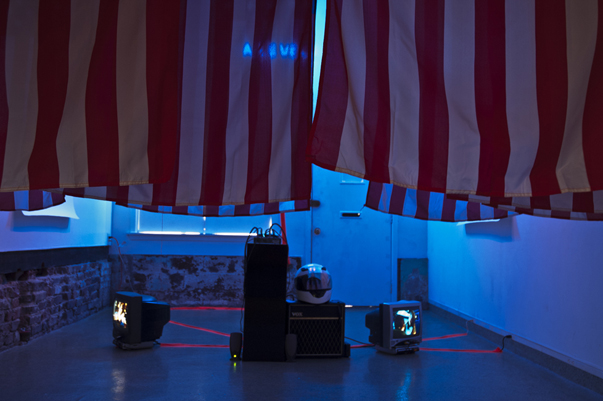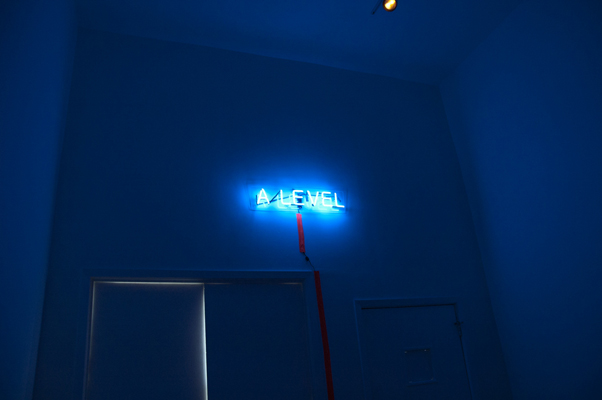Review: Nikita Gale at The Front

Installation view of Nikita Gale's "White Player: Niki" at The Front, New Orleans.
Nikita Gale
The Front
4100 St. Claude Avenue
September 15–October 6, 2013
In 2002, Halle Berry became the first African-American woman to win an Academy Award for Best Actress. In her emotional five-minute speech, she acknowledged, “This moment is so much bigger than me,” recognizing all the black actresses who paved the way for her achievement. This speech forms the backbone of Atlanta-based artist Nikita Gale’s installation "White Player: Niki." In addition to being printed twice on the walls, a video of Berry’s speech is the first thing the viewer encounters when entering the gallery. After hearing it five or six times, the monologue takes on a hymnal quality—Berry’s crescendo of “thank yous” grows to a heightened screech near the end, just as the show’s producers are clearly trying to mute her offstage.
Competing with the actress as they did in 2002, Nicole Kidman (in Moulin Rouge) and Sissy Spacek (in In the Bedroom) play on monitors in the gallery alongside Monster’s Ball, the film that won Berry her Oscar. But only Monster’s Ball is audible. It bears mentioning that although Berry was lauded for her performance and her win, she also garnered criticism for the role. Her character, Leticia, has a torrid sex scene with Billy Bob Thornton’s racist Hank (who also happens to be the prison guard who helped execute her husband). Many lamented the fact that in order for an African-American woman to win Hollywood’s most coveted award, she had to submit sexually to a white male. She still had to play by the dominant racial and gender stereotypes in American cinema: black men are criminals, black women need saving, and the white man is the answer.
This context provides the lens for viewing other elements in Gale’s installation: cheap nylon American flags that hang from the ceiling and a quote by philosopher Ludwig Wittgenstein, scrawled in black ink on white paper, which warns that the greatest obstacle to understanding is often our inability to move past what we want to see. Last but not least, there’s the “white player” herself, the artist fashioned in a white motorcycle helmet, appearing in photographs as the futuristic and somewhat menacing guardian of the exhibition space. So just who is the “white player”? Is it Gale? An alter ego Niki? Berry? Kidman or Spacek? The viewer? Though she doesn’t give us the answer, Gale’s multisensory interpretation of a single, historic moment in American pop culture provides a far-out, yet nuanced take on our varied roles as its consumers and producers.

Installation view of Nikita Gale's "White Player: Niki" at The Front, New Orleans.



